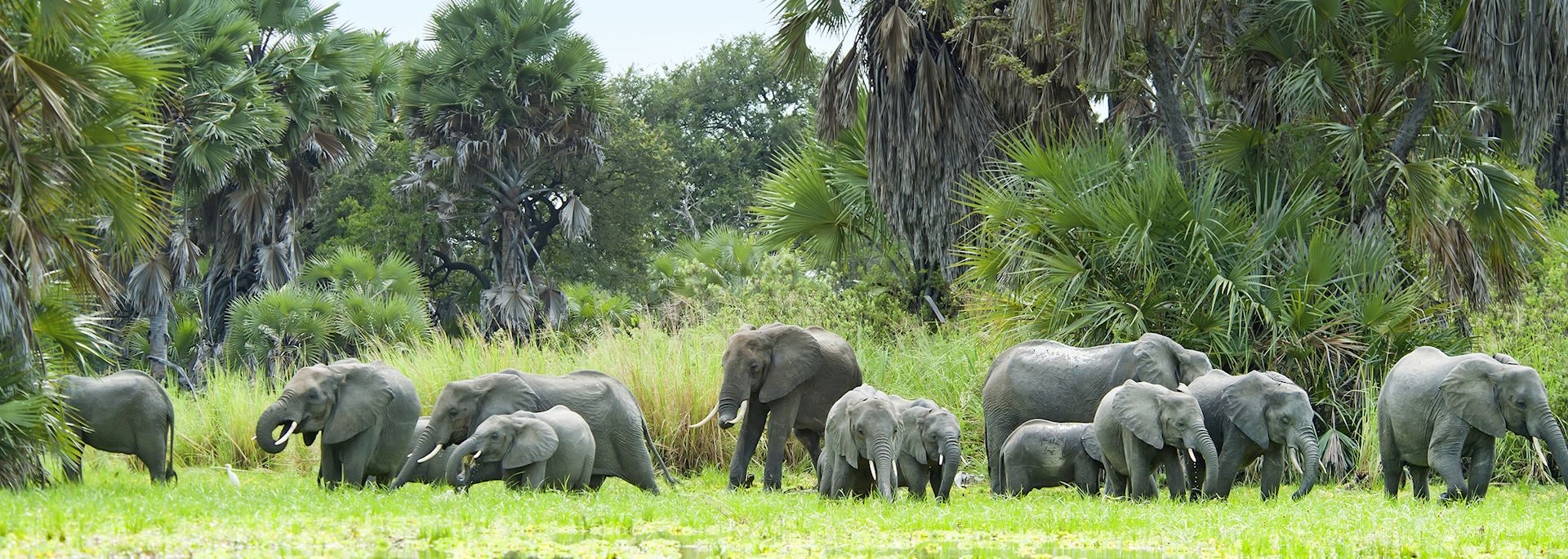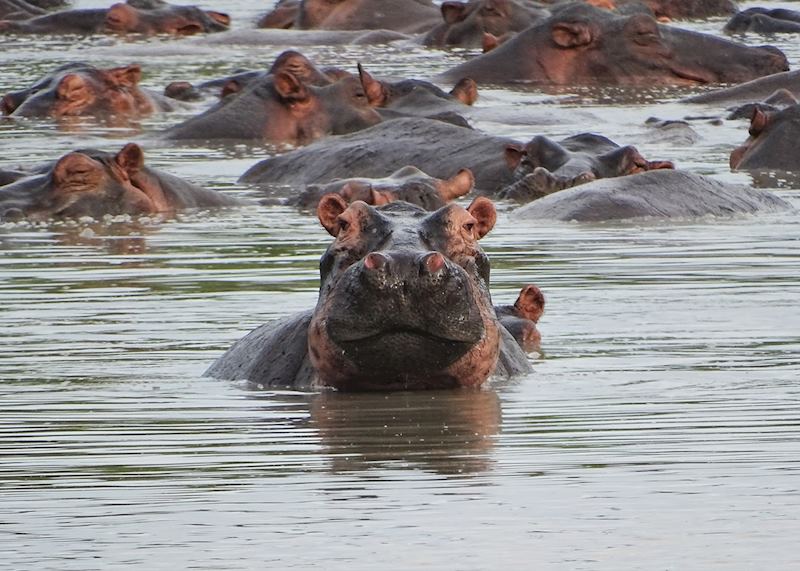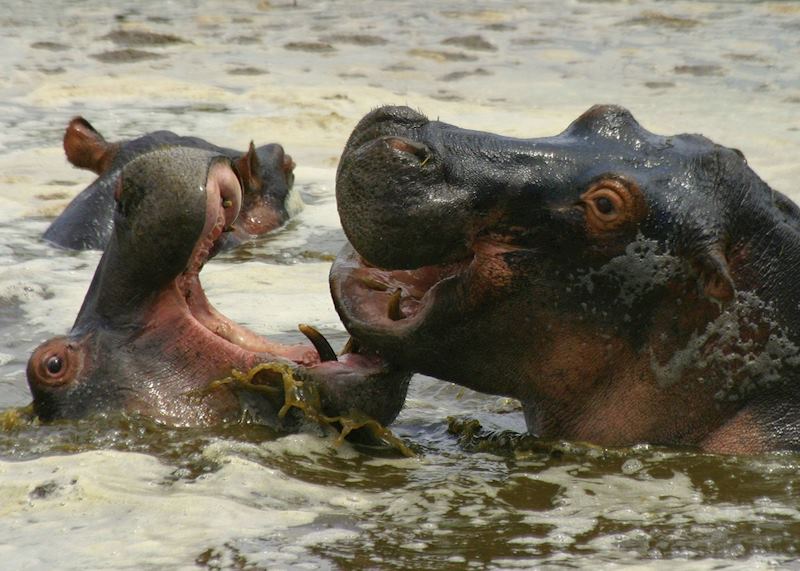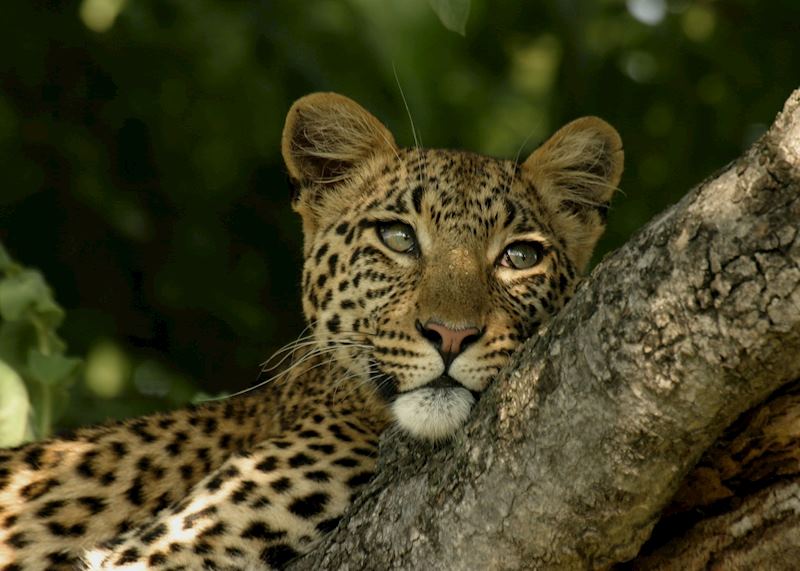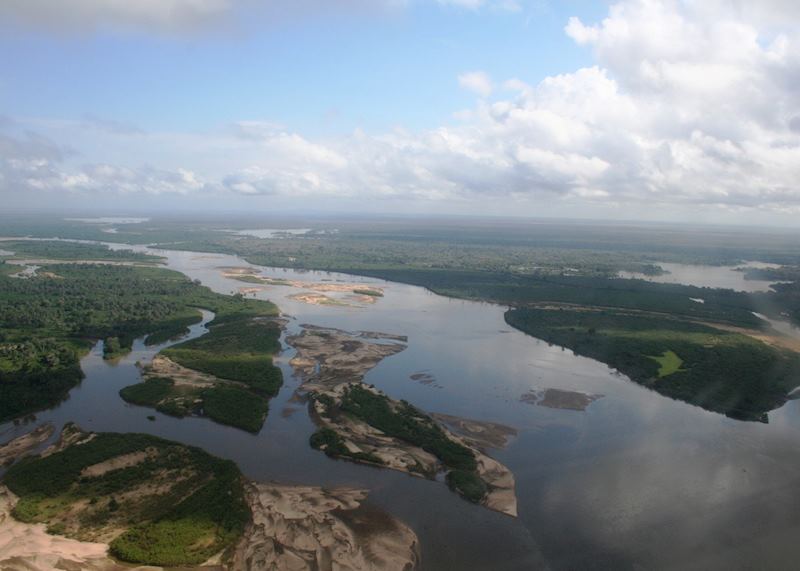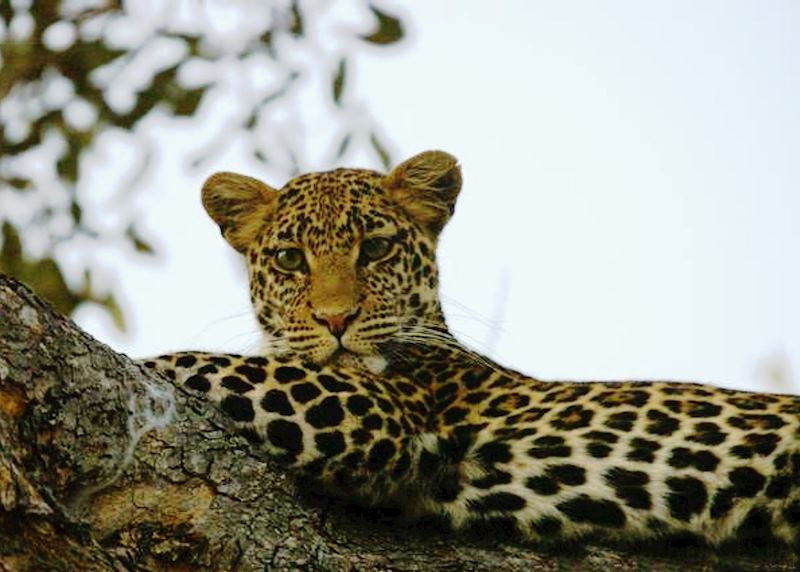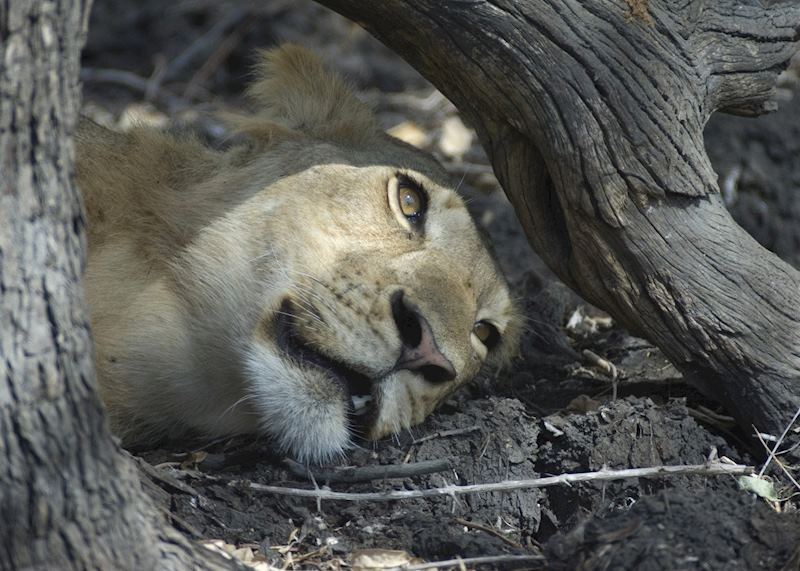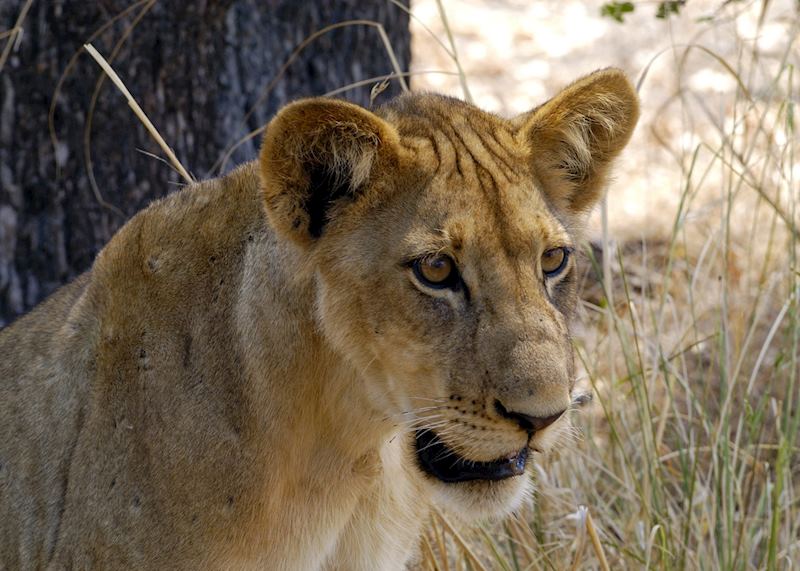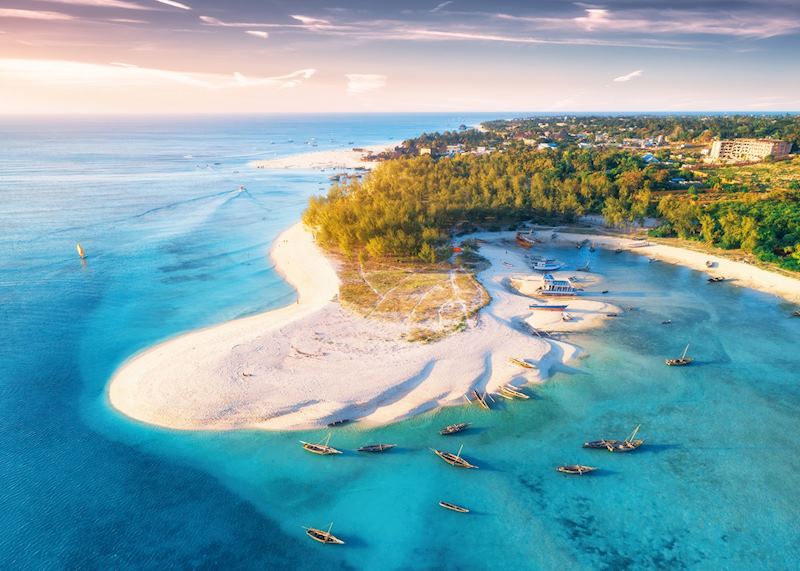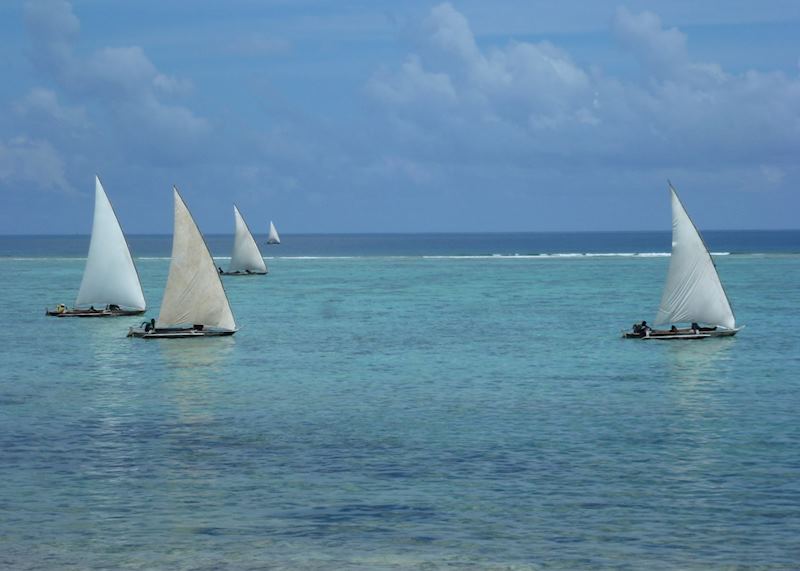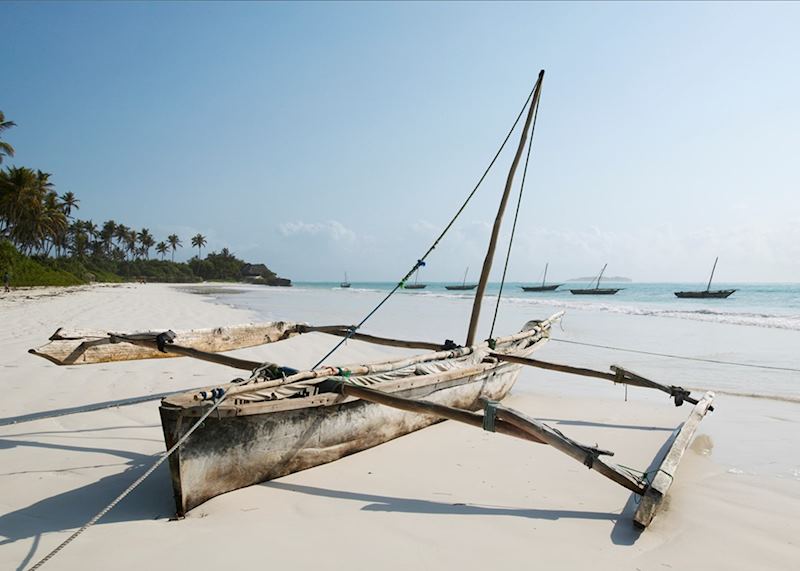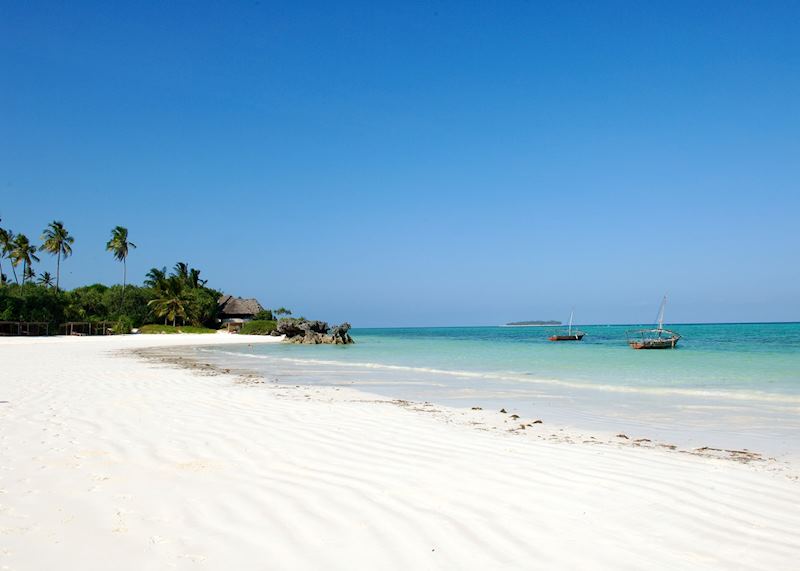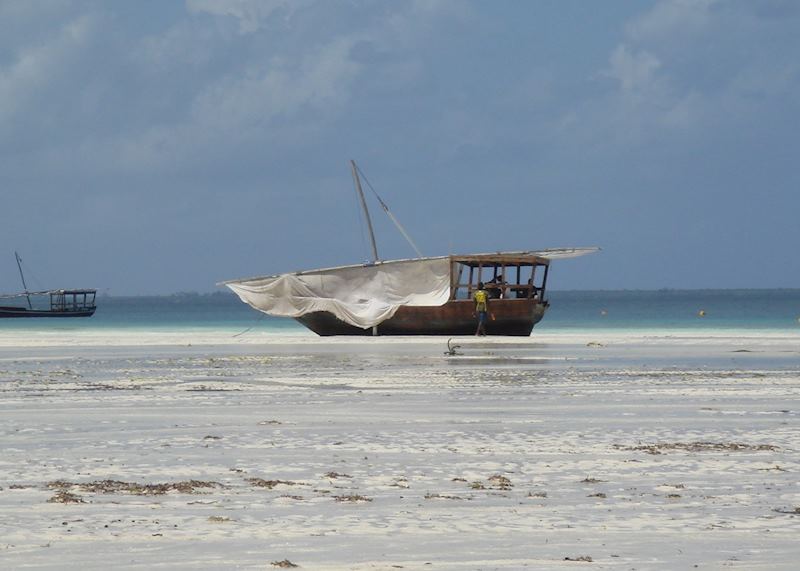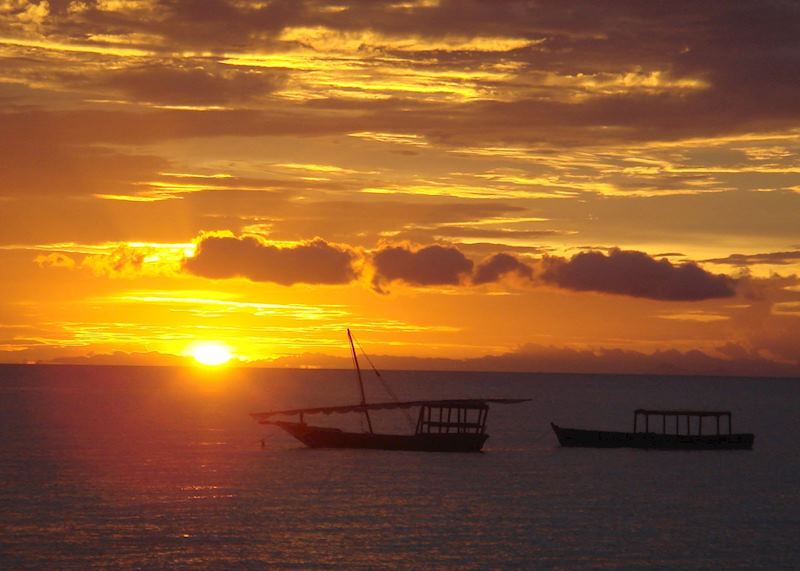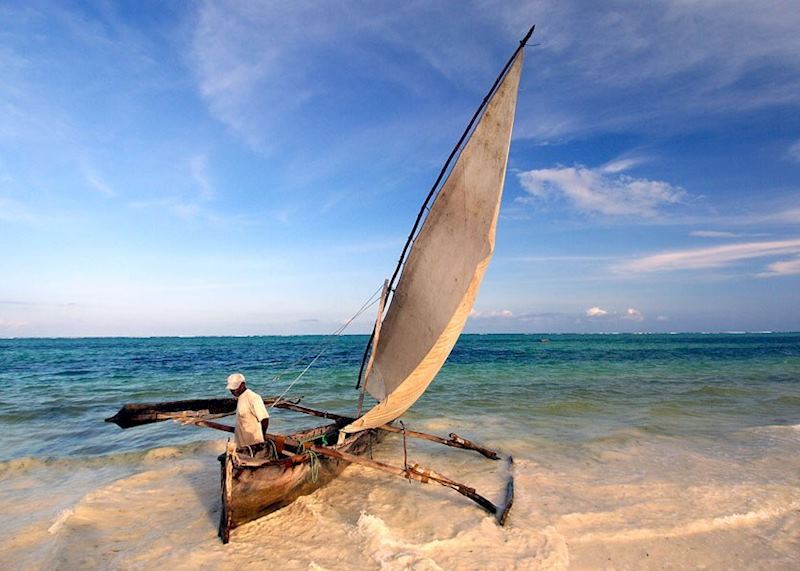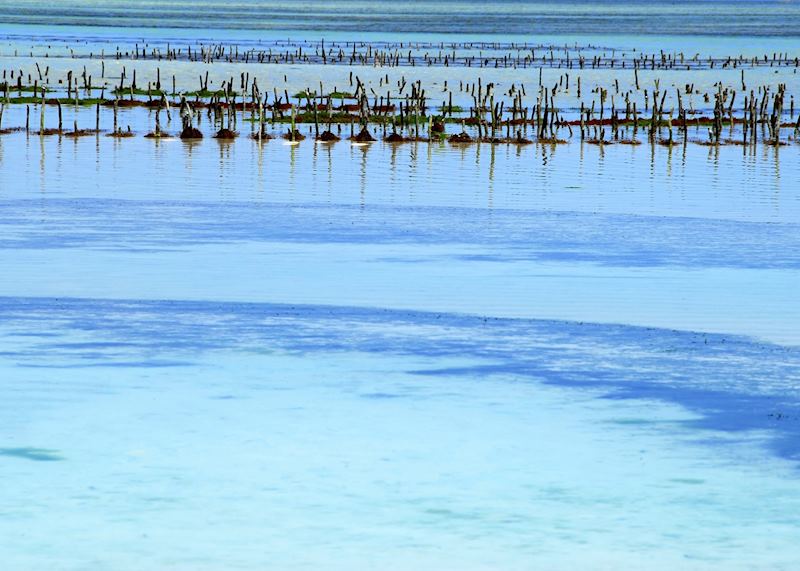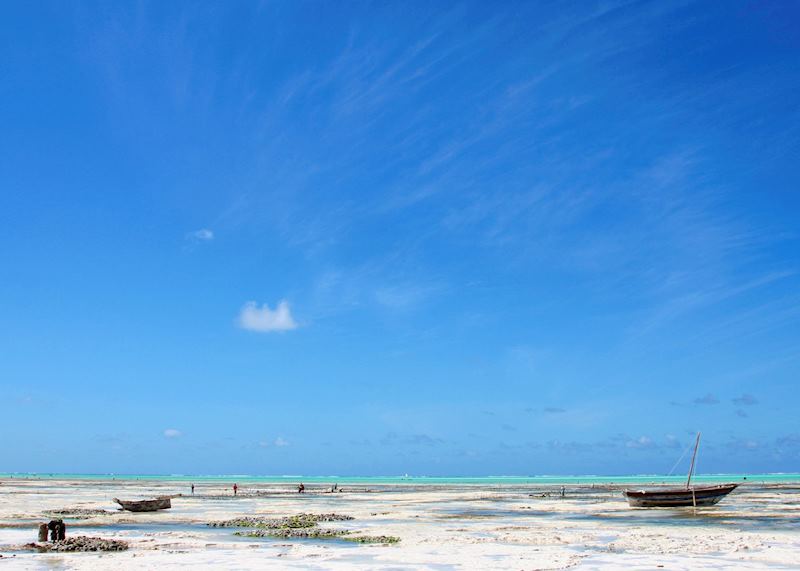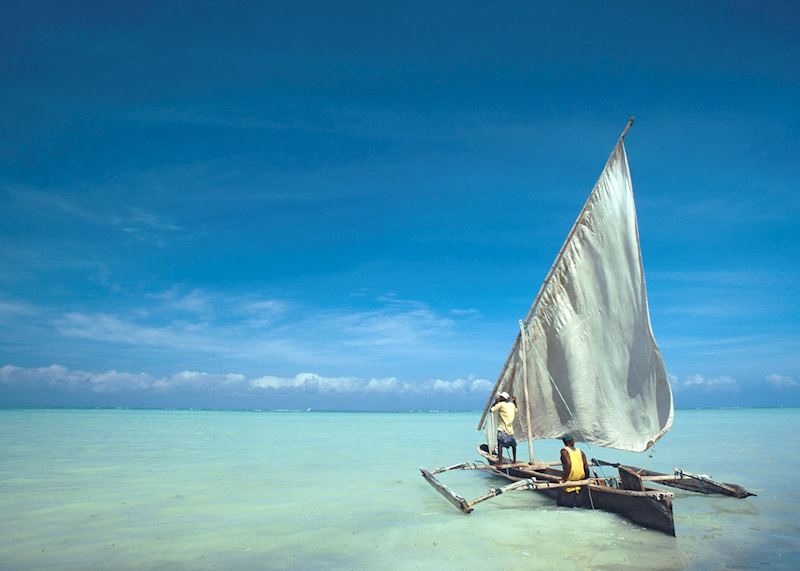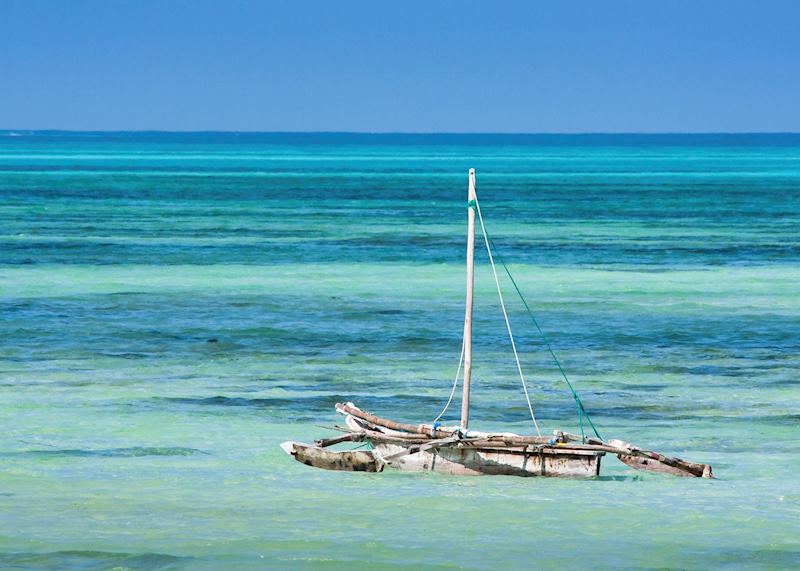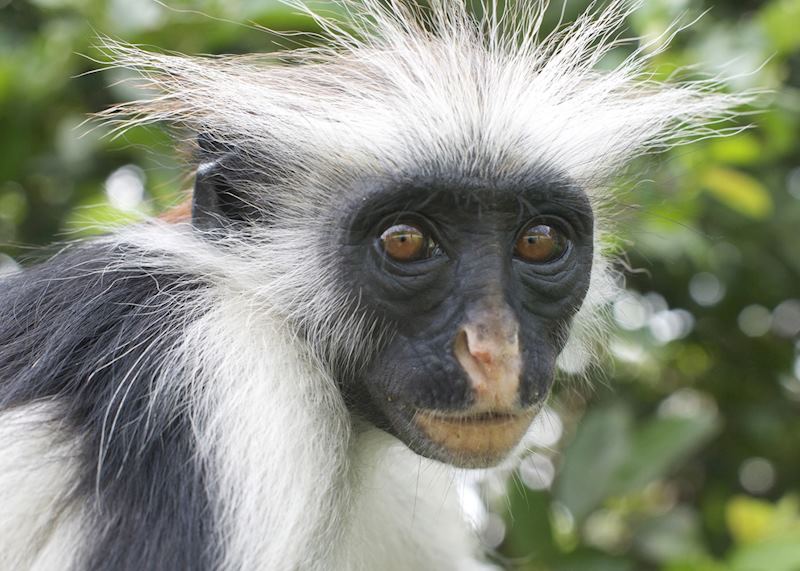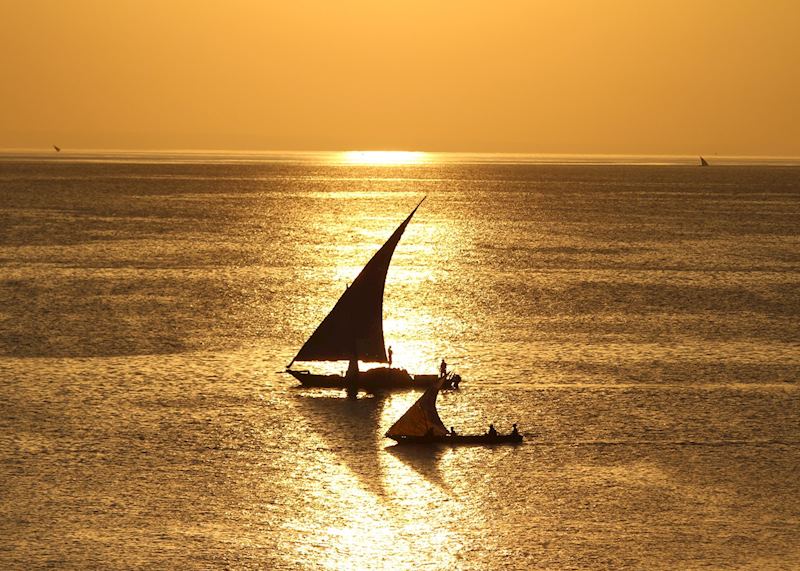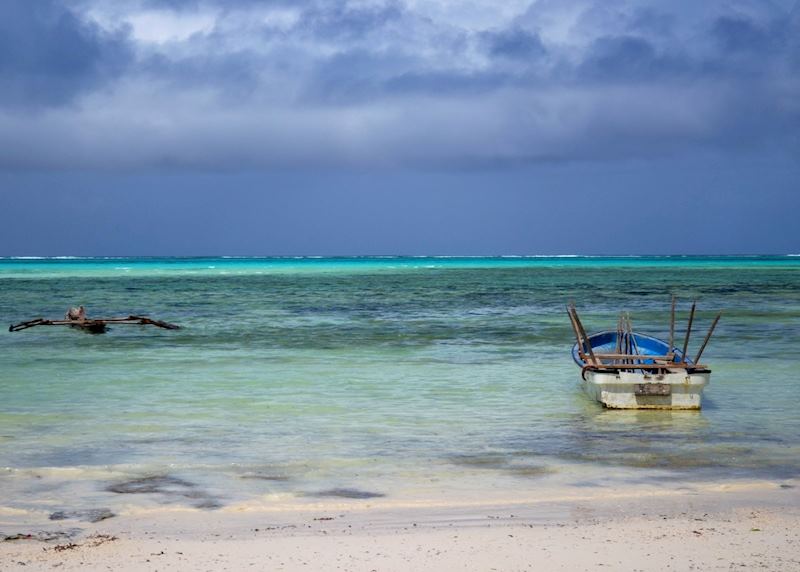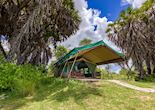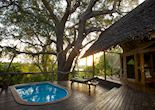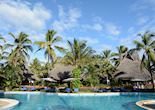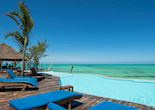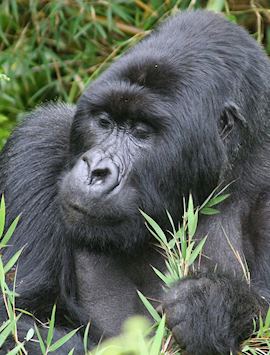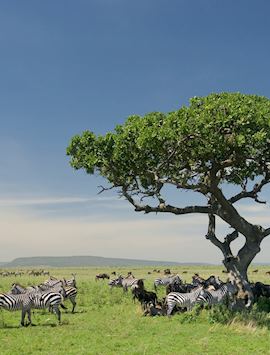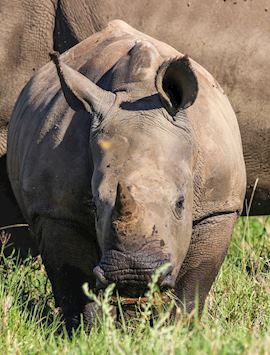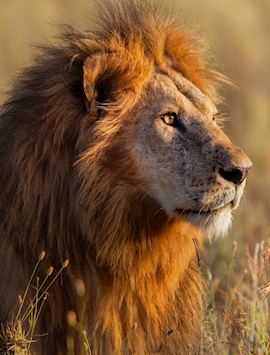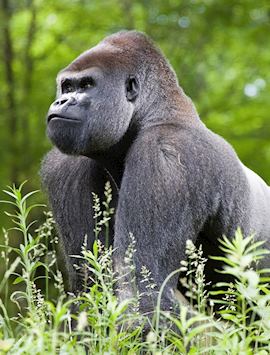
- Jump to:
- Itinerary
- Reviews
- When to go
Tour highlights
Search for wild dogs, lions, elephants and buffalo on morning and afternoon game drives in Nyerere National Park.
Enjoy a sunset boat trip along the meandering Rufiji River, looking out for hippos, crocodiles and waders.
Follow animal tracks and learn about smaller wildlife species on guided bush walks with experienced rangers.
Relax on the white sandy beaches of Zanzibar and explore the island’s spice farms.
Price includes:
- Domestic flights in destination
- In-destination transfers
- Activities and excursions as detailed
- All accommodations
- 24-hour support while you travel
Itinerary idea
Ask us if you would also like us to arrange your international flights at our preferred rates.
-
Your safari starts with a light aircraft flight from the bustling metropolis of Dar es Salaam into the heart of the Nyerere National Park. The flight is an hour, but you'll feel worlds away as you fly over seemingly endless expanses of acacia trees, wide snaking rivers and golden savanna. Nyerere National Park is wild, remote and one of the largest protected areas in Africa. There are few camps, and consequently, you won’t encounter many vehicles during your time here. You’ll be met by a driver at the airstrip who will take you to your camp to settle in. This afternoon you’ll be out on a boat safari, gliding over the water past enormous pods of hippos and huge crocodiles, enjoying the plethora of birdlife and admiring the sun setting in a blaze of reds, oranges and pinks.
-
Nyerere National Park is bisected by the Rufiji River, Tanzania’s largest river. Its many tributaries, channels and lakes create the varied landscapes that define the reserve. These waterways are lined by towering Borassus palms and forests of doum palms, and are a good place to see unusually large groups of Masai giraffe and other ungulates such as buffalo, waterbuck, impala and zebras. Hungry lions lurk nearby, and there’s a chance of seeing hyenas and leopards as well. Despite many years of poaching, elephant populations are growing and can now be seen in the reserve. On your first full day of safari viewing in Nyerere National Park, you’ll be in for some close wildlife encounters.
-
Nyerere National Park is an important sanctuary for the endangered African wild dogs and is home to healthy populations, making for some spectacular sightings. Wild dogs are elusive animals that move around constantly, meaning they are almost impossible to track. Anyone who has a sighting of wild dogs should consider themselves very lucky, and Nyerere National Park is one of the only reserves on the continent where you are likely to see them.
-
Not only is Nyerere National Park varied in landscape and wildlife, but there are also several ways you can experience safari. All the camps offer morning and afternoon drives, boat safaris and walking safaris, and each experience will give you a completely different perspective of nature and the animals that survive in it. On drives, you’ll cover the most ground and see a whole range of wildlife. Boat safaris get you up close to hippos and crocodiles, give you the best bird sightings and show you the hauntingly beautiful surfaces of the waterways, dotted with smooth dead trees sticking out like inverted lightning strikes against the backdrop of a blazing sunset. Being on foot allows you to appreciate the smaller creatures and plants, and your proximity to wildlife will leave you with many stories to take home.
-
Enjoy your final drive on the way to the airstrip this morning, where you’ll catch your light aircraft flight to Unguja, the largest island of the tropical Zanzibar Archipelago, most commonly referred to as Zanzibar. You’ll fly over the impossibly turquoise blue waters of the Indian Ocean before landing on the island, a smiling and sunny place with palm-fringed white sand beaches and a blend of cultures. Most of the best beaches are on the East Coast, and you’ll pass vibrant villages and spice plantations on the way to wherever you’re staying on the beach. After four days of early wake-ups, we recommend spending the rest of today relaxing.
-
There’s plenty to do and see while you’re staying in Zanzibar, but you shouldn’t miss spending some time lazing on the beach while you watch the fishermen head out to sea on their wooden dhows, reading a book under the shade of a palm tree and swimming in the warm Indian Ocean (when it’s high tide). If you’re feeling more active, it’s easy to arrange diving or snorkeling as well as other water equipment like kayaks and paddleboards, or bicycles to explore the local fishing villages.
-
Zanzibar’s history was greatly shaped by its geography, the prevailing winds of the region placing it directly on the Indian Ocean trade routes. Trade of one kind or another is an intrinsic part of the island’s culture and has shaped its history for thousands of years. The abundance of valuable spices, including cloves, cinnamon, turmeric, nutmeg and vanilla made Zanzibar the hub of the spice trade for centuries, and today you can visit the spice plantations on the island.
-
Arabs had the deepest influence on Zanzibar, evident in the architecture of Stone Town, an old trade center now designated as a UNESCO World Heritage Site. No visit to Zanzibar would be complete without walking around the maze-like collection of forts, mosques and markets. A local guide will show you around and tell you about the town’s history. There are also dozens of restaurants and food stalls lining the streets, making this the best place on the island to try the local cuisine, which combines Arab, Portuguese, Bantu, Indian and British influences, as well as using the spices grown on the island.
-
Spend the rest of your time in Zanzibar as you please. You could visit the enchanting Jozani Forest in the south of the island, a tropical forest home to the endemic Kirk’s red colobus monkeys. There are walking trails through the forest where you can watch the Kirk’s monkeys as well as other species leap around the trees, and listen and look for the variety of birdlife. You could head out on a boat cruise in a traditional wooden dhow, or have a meal at The Rock, a restaurant known for its extraordinary location perched on a rock in the ocean.
-
Say goodbye to Zanzibar today. You’ll be picked up and taken to the airport for your onward flights.
Accommodation
- Dar es Salaam
- Nyerere National Park
- Zanzibar Island
The specialist who designs your trip to Tanzania will have explored the country many times and, in some cases, lived there. Their first-hand knowledge gives us the belief that no other travel company can match our expertise in helping you plan your trip.
When to go
| Jan | Feb | Mar | Apr | May | Jun | Jul | Aug | Sep | Oct | Nov | Dec |
|---|---|---|---|---|---|---|---|---|---|---|---|
|
|
|
|
|
|
|
|
|
|
|
|
|
| Place | Daily max temperature (°C) | Monthly rainfall (mm) |
|---|---|---|
| Dar es Salaam | ||
| Nyerere National Park | ||
| Zanzibar Island |

